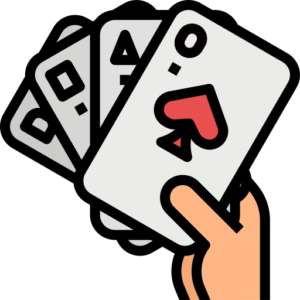Glossary Term
Balanced Count
Balanced Count
Used In: Blackjack
Introduction to Balanced Count
Origins of Balanced Counting
The origins of balanced card counting in blackjack stem from the development of early card-counting systems, primarily during the 1960s. Edward O. Thorp is often credited as the pioneer of card counting, thanks to his groundbreaking book Beat the Dealer, published in 1962. Thorp introduced the Ten Count system, which helped players keep track of high-value cards like 10s and Aces, giving them a statistical edge when these cards were still in the deck.
However, the Ten Count system was complex and difficult for many players to apply in real time. In the years that followed, other mathematicians and gamblers sought to refine Thorp’s work, leading to the development of simpler and more practical counting methods. The balanced count systems arose as a direct result of this evolution. The balanced Hi-Lo system, created by Harvey Dubner in the late 1960s, was one of the first widely accepted balanced counting methods. In this system, players assign positive, negative, or neutral values to the cards (e.g., 2-6 = +1, 7-9 = 0, 10-Ace = -1). As the deck is dealt, the running count fluctuates, but once all the cards are played, the count returns to zero—hence the term “balanced.”


Explanation of Balanced Counting in Blackjack
Why Going for the Balanced Count is Important
Understanding balanced counting is important for blackjack players because it provides a strategic edge over the house by helping them determine when the deck is favorable. In blackjack, the composition of the remaining cards can shift the odds either in favor of the player or the dealer. Balanced counting systems, like Hi-Lo, allow players to track these changes and make smarter decisions about how to bet and play.
A key advantage of balanced counting is its accuracy. Because the count returns to zero when all cards are dealt, players can precisely gauge the ratio of high to low cards in the deck. This knowledge allows them to increase their bets when the deck is rich in high cards (which benefits the player) and lower their bets or make safer decisions when the deck is low in high cards (which favors the dealer).
Moreover, understanding balanced counting helps players improve their long-term outcomes by turning a game that usually favors the house into one where they can make statistically informed choices. This is why serious blackjack players use balanced counting systems—they offer a reliable way to minimize losses and maximize gains. Without this understanding, players are essentially relying on chance rather than strategy.
Strategy and When to Double Down
To gain an advantage with balanced counting in blackjack, follow these steps:
Track the Running Count: Use a system like Hi-Lo, where you assign values to the cards as they are dealt. Low cards (2-6) are +1, high cards (10-Ace) are -1, and 7-9 are neutral. Keep a running tally as the game progresses.
Calculate the True Count: If multiple decks are in play, divide the running count by the number of decks remaining. This “true count” adjusts for the number of decks and gives a more accurate picture of the deck’s composition.
Adjust Your Bets: When the true count is positive (indicating more high-value cards remain), increase your bets, as the odds are in your favor. When the count is negative or neutral, reduce your bets to minimize losses.
Make Strategic Decisions: With a high true count, consider adjusting your playing strategy, such as hitting or standing differently than basic strategy suggests, to capitalize on the deck's favorable composition.
By combining these actions, balanced counting allows you to bet and play more strategically, giving you an edge over the house in the long run.
.
The Most Key Examples of Advantage
Example 1: Running Count Calculation
Imagine you’re playing blackjack and the dealer deals the following cards: 2, 5, 10, Ace, 3, 8, 7, and King. In the Hi-Lo counting system, you give the 2 and 5 a value of +1, the 10 and Ace a value of -1, and the 7, 8, and 9 a value of 0. As you count, you start with zero. The 2 adds 1, the 5 adds another 1, bringing your total to 2. The 10 subtracts 1, dropping your count back to 1. The Ace subtracts 1 again, leaving you at 0. The 3 adds 1, bringing you back to 1. Finally, the 8 and 7 don’t change the count, and the King subtracts 1. So, your running count is back to 0.
Example 2: True Count Calculation
Now, let's say your running count is +6, but you notice that there are 3 decks left in the shoe. To find the true count, divide the running count by the number of decks remaining. In this case, you take 6 (the running count) and divide it by 3 (the decks left), giving you a true count of +2. This true count helps you understand how favorable the remaining cards are.
Conclusion
The Top Online Casinos for Gambling
To assist players in their quest for the best online casinos, reputable gambling authorities and industry experts meticulously evaluate and rank platforms based on various criteria such as licensing, game variety, user experience, payment options, customer support, and promotional offers. Several online casinos consistently rank among the top in the industry, offering a comprehensive suite of gaming options, secure banking methods, and responsive customer service.
welcome bonus
100%/€500 + 200 Free Spins
35x wagering (Deposit & Bonus)
welcome bonus
225%/€2,000 + 225 Free Spins
45x wagering (Deposit & Bonus)
welcome bonus
225%/€1,000 + 200 Free Spins + Secret Bonus
40x wagering (Deposit & Bonus)
welcome bonus
100%/€250 + 100 Free Spins
40x wagering (Deposit & Bonus)
welcome bonus
100%/€2,000 + 200 Free Spins
30x wagering (Deposit & Bonus)
welcome bonus
125%/€5,000 + 100 Free Spins
40x wagering (Deposit & Bonus)
welcome bonus
100%/€1,500
25x wagering (Deposit & Bonus)
welcome bonus
100%/€500 + 200 Free Spins + 1 Bonus Crab
35x wagering (Deposit & Bonus)
welcome bonus
100%/€500 + 200 Free Spins + 1 Bonus Crab
35x wagering (Deposit & Bonus)
welcome bonus
250%/€800 + 200 Free Spins
40x wagering (Deposit & Bonus)
Top 5 best casinos
$titl$ is not the Best Choice. Here are some better options:



Top 10 best casinos
$titl$ is RESTRICTED IN United States. Our Current Top Picks for United States are below:








Author
Branimir Ivanov | Senior News Contributor








